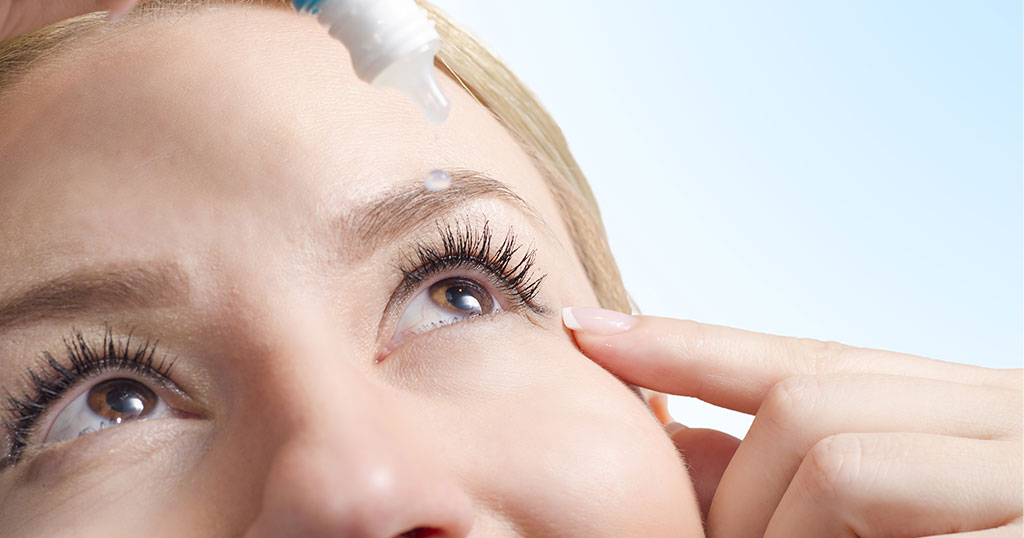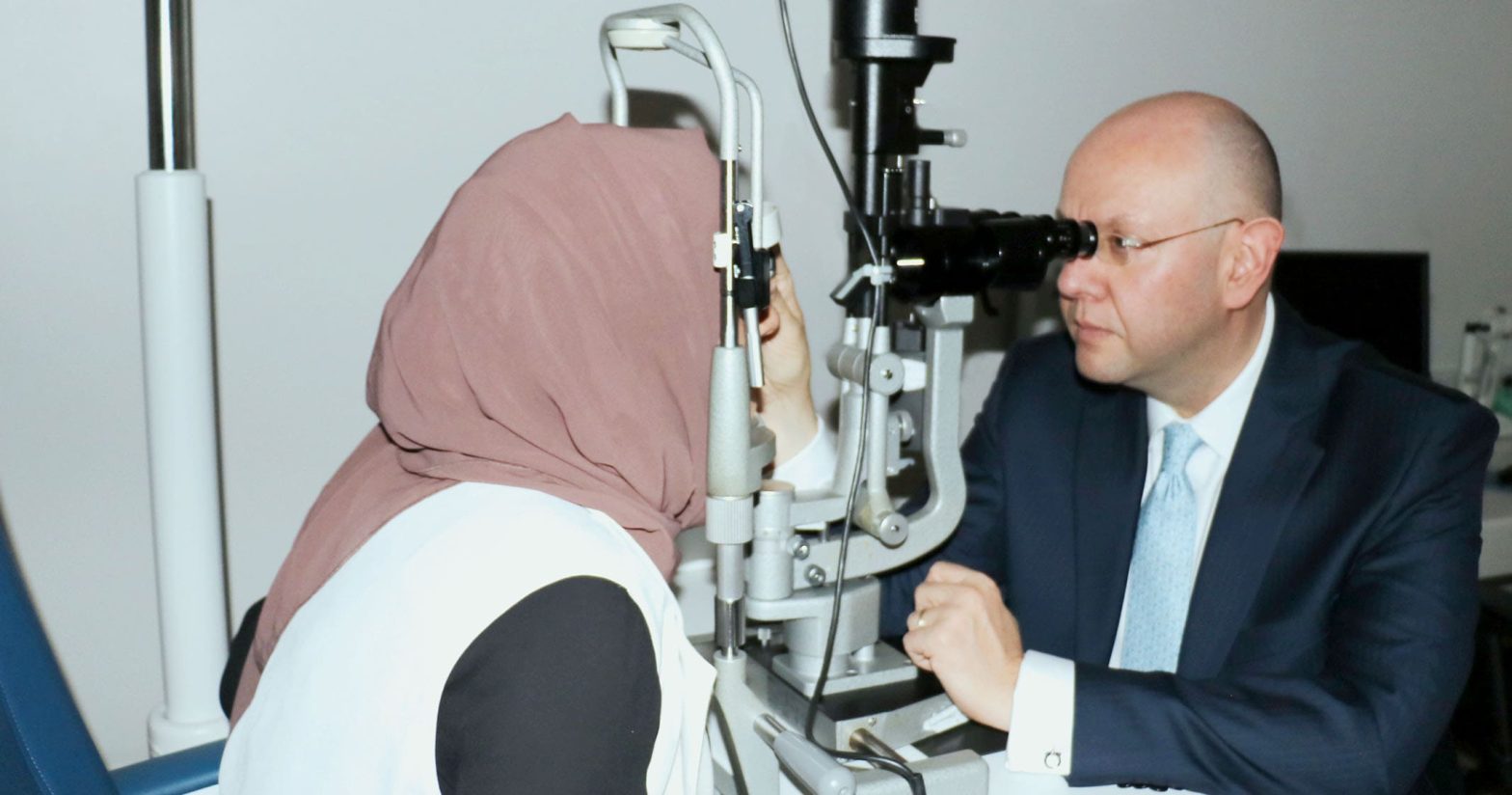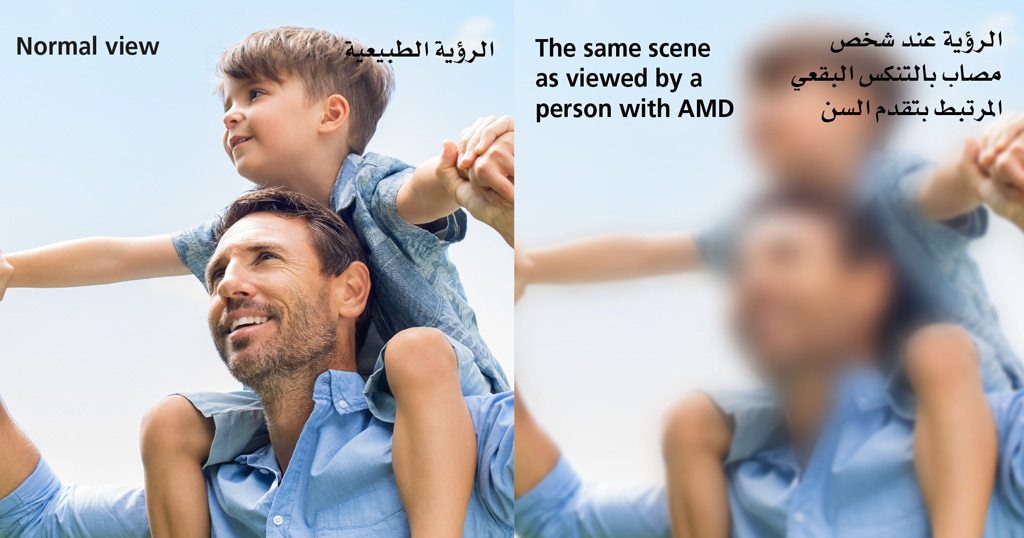This blog on excessive blinking in children has been contributed by Dr. Imran Jawaid, Consultant Paediatric Ophthalmologist.
Excessive Blinking in Children: Causes, Treatment, and Prevention
Blinking is a natural and essential reflex that protects the eyes. It helps keep the eyes’ surface lubricated and shields them from bright light, dust, and other irritants. However, when blinking becomes excessive, it can indicate underlying issues, particularly in children. Understanding the causes, treatment options, and preventive measures is crucial for ensuring your child’s eye health.
Understanding Blinking Rates
The blinking rate in newborns is typically low, occurring as infrequently as twice a minute. As children grow, this rate naturally increases, reaching approximately 14-17 times per minute in teenagers. Various factors, such as exposure to bright light, changes in temperature, and humidity, can also temporarily increase the blinking rate.
Causes of Excessive Blinking
Excessive blinking in children can stem from several underlying causes:
- Eyestrain: Eyestrain can occur due to reading in poor lighting, lack of sleep, or excessive screen time. When the eyes are overworked, they may respond by blinking more frequently to alleviate discomfort.
- Inflammation: Conditions such as blepharitis (inflammation of the eyelids) or an irregular tear film can lead to irritation and increased blinking as the eye attempts to clear the discomfort.
- Eye Allergies: Allergies affecting the eyes can cause itching, redness, and irritation, leading to frequent blinking as the body’s reflex to manage the discomfort.
- Ocular Surface Disorders: Any disorder affecting the eye’s surface, such as dry eye syndrome, can lead to excessive blinking as the eyes try to maintain adequate moisture.
- Refractive Errors: Conditions such as nearsightedness, farsightedness, or astigmatism, which require corrective lenses, can result in frequent blinking as the child struggles to focus clearly.
- Strabismus (squints): Misalignment of the eyes, known as strabismus or squint, can also lead to frequent blinking as the eyes attempt to adjust to maintain proper focus and alignment.
- Neurological Disorders: Although rare, certain neurological conditions can manifest as excessive blinking. Examples include Tourette syndrome or other tic disorders, which can cause involuntary blinking. Parents should be attentive to other symptoms, such as facial tics or unusual eye movements, and seek a specialist’s opinion if these are observed.
Recognising the Symptoms
Parents may notice several signs that indicate excessive blinking in their child:
- Increased Frequency: The child may blink more often than usual, even with no apparent irritants.
- Tight Eye Closure: The child may shut their eyes tightly with each blink.
- Awkward Eye Movements: Rolling or widening of the eyes may accompany the blinking.
- Rubbing of the Eyes: A continual need to rub the eyes may indicate discomfort or irritation.
These observations should prompt a consultation with a paediatric ophthalmologist, especially if the blinking persists or is accompanied by other symptoms.
Management and Treatment
The management of excessive blinking involves addressing the underlying cause. A paediatric ophthalmologist will conduct a thorough eye examination to diagnose the condition accurately. Treatment options may include:
- Corrective Glasses: Prescription glasses can help reduce eye strain and, consequently, blinking when addressing significant refractive errors.
- Lubricant Eye Drops: Regular use of topical lubricant eye drops can alleviate dry eyes and reduce the need for frequent blinking.
- Medication: If eye allergies are identified as the cause, appropriate medications can be prescribed to manage the symptoms effectively.
Promoting Healthy Visual Habits
It is important to encourage healthy visual habits in children to prevent excessive blinking. Recommendations include:
- Sunglasses or Wide-Brim Hats: These helps protect the eyes from bright sunlight, reducing the strain caused by glare.
- Proper Lighting: Ensure that children read in well-lit environments to minimise eye strain.
- Screen Breaks: Encourage regular breaks from digital screens to rest the eyes. A useful guideline is the 20-20-20 rule—taking a 20-second break every 20 minutes to look at something 20 feet away.
- Balanced Diet and Hydration: A diet rich in vitamins A, C, and E, along with adequate hydration, supports overall eye health.
Conclusion
Excessive blinking in children can be concerning, but it is often a symptom of an underlying issue that can be addressed with the proper care. Understanding the causes, recognising the symptoms, and seeking timely treatment from a paediatric ophthalmologist are essential steps in managing your child’s eye health. Promoting healthy visual habits and remaining vigilant about your child’s eye behaviour can help prevent and manage excessive blinking effectively.
This week’s blog on Pink Eyes: A Common Problem in Children has been contributed by Dr. Syed Ali, Consultant, Paediatric Ophthalmic Surgeon
Acute conjunctivitis or commonly pink eye is the infection of the superficial lining over the white part of the eye. It’s common in children to have occasional pink eye.
What are some of the symptoms parents should notice?
- Redness over the white of the eye which can be mild to very severe
- Pus like discharge from the eye
- Eyes are usually sticky and crusty in the morning or after sleep
- Mild lid swelling
- Mild discomfort or irritation but no pain
What causes pink eye?
- It is an infection caused by bacteria or virus
- Common after sore throat and which case it is viral
- Highly contagious and children can get from other students in nursery or school
- Another common cause is children rubbing their eyes with dirty hands
Prevention
- Washing hands
- Avoid contact with infected person
- Washing eyes (lid hygiene)
- Avoid swimming with pink eye
What is the treatment?
- It is important to first get the correct diagnosis
- Usual treatment is with antibiotic eye drops
Why it’s important to see the eye doctor?
There are lots of condition which can mimic pink eye, like inflammation of the white of the eye or front part of the eye, dry eyes, inflammation of the lid margins, blocked tear ductany scratch, injury to the eye or allergy in the eye. So, it’s very important to see an ophthalmologist (eye doctor) to properly diagnose the condition and to get treatment on time.
If the child is suffering from pink eye, it is advisable not to send child to school and don’t share towel and pillow with other family members.
This week’s blog on contact lens wear and care has been contributed by Dr Osama Giledi, Consultant Ophthalmologist, Specialist in Cataract, Cornea and Refractive Vision Correction Surgery.
Here are some useful tips on contact lens wear and care to help you get the best out of your contact lenses.
Things to do:
1. Wear only the lenses specified by your contact lens practitioner
2. Have regular eye check-ups as advised by your ophthalmologist
3. Apply your lenses before putting on and removing make-up
4. Always wash and dry your hands prior to handling your contact lenses
5. Always rub, rinse and store your lenses in the recommended solution before and after each use
6. Discard single-use lenses after each wear
7. Always clean the lens case with solution, wipe with a clean tissue and air dry after each use by placing the case and lids face down on a tissue
8. Carefully handle the lens and check that it is not damaged or inside out before inserting
9. Avoid spraying hairspray or other aerosols into your eye and keep your eyes closed when using any spray
10. Discard lenses and solutions that are past their expiry date
11. Replace your lens case at least monthly
12. Strictly follow the recommended lens wearing schedule and replacement frequency
13. Keep a pair of spectacles with you as backup for when you need to remove your lenses
Always ask yourself each time you are going to wear your contact lenses:
1. Do my eyes feel good with my lenses (no discomfort)?
2. Do my eyes look good (no redness)?
3. Do I see well (no unusual blurring with either eye)?
If the answer to any of these questions is no, then do not wear your contact lenses and consult your contact lens practitioner immediately
Things you should not do:
1. Use tap water, or any other water, on your lenses or lens case
2. Wet your lenses with saliva
3. Wear your lens if it falls on the floor without cleaning it again
4. Wear dirty or damaged lenses
5. Continue to wear your lenses if your eyes don’t feel normal, such as blurred vision or any discomfort
6. Use any eye drops without first consulting your doctor or contact lens practitioner
7. Re-use or top up cleaning solution – discard and replace with fresh solution each time lenses are stored
8. Wear lenses that are left in the case for more than one week without first cleaning and storing them in fresh solution
9. Wear your lenses when showering unless you keep your eyes firmly closed
10. Sleep in your lenses unless advised to by your practitioner and whilst wearing special contact lenses
11. Use your lenses for swimming or water sports, unless wearing protective eye goggles
12. Switch the cleaning solution you use without the advice of your practitioner
13. Share contact lenses with other people
Please remember that if you have any questions or concerns about your contact lenses you should consult your contact lens practitioner or your ophthalmologist for advice
This week’s blog on Floaters and Flashes has been contributed by Dr Ammar Safar, Medical Director, Consultant Ophthalmologist and Vitreoretinal Surgeon.
Some people describe seeing little objects of different shapes and sizes occasionally floating in front of them. We call these objects ‘Floaters’ because they seem to float in front of you wherever you look. In fact, these are small fibres located in the vitreous, the jelly-like substance which fills the eye, in front of the retina. It is very common to see these floaters from time to time and they are more likely to be found in near-sighted individuals.
The floaters are usually seen only when looking at a light background such as a white computer screen or blue sky or sea. Typically, the floaters do not increase with time and if they do, it is usually a very slow progression over many years. The only effective treatment is removing the vitreous, through surgery. However, the procedure is rarely performed as floaters are very benign and rarely cause any significant vision loss. They are more annoying than anything else.
There is no other treatment such as drops or medication that will get rid of them. If there is a sudden increase in the number of floaters (5-10 or more new ones appearing) or if there are flashes of light associated with them, then a visit to your ophthalmologist is necessary to check your retina and ensure there are no holes or tears in it.
This week’s blog on Diabetes Mellitus has been contributed by Dr Igor Kozak, Consultant Ophthalmologist, Specialist in Vitreoretinal Surgery, Medical Retina and Uveitis
Diabetes mellitus is now one of the most common epidemics across continents. While it is a common household term, most people don’t understand what exactly it means to have diabetes. A body with diabetes is unable to properly use the energy from the food ingests, especially carbohydrates, thereby affecting various organs and their functioning.
However, what people know even less about diabetes is that if not treated appropriately, the eyes and visual function can take a severe toll, and diabetes can lead to various vision related diseases.
Diabetic Retinopathy
The initial signs of diabetic retinopathy are small. While modern research is able to detect them, they usually go unnoticed. The retina is the structure at the backside of the eye where the light is processed and the image is transmitted to the brain. Starting as small hemorrhagic spots on the retina, they progress to bigger bleeds, tissue swelling, or retinal contraction. Early control of diabetes can control this.
Macular Edema
The macula is responsible for sharp and detailed vision. The swelling due to diabetes can affect the macula, with decreased visual activity as a result. Further, the photoreceptor cells, that are responsible for converting light to signals, can also be damaged. Modern treatment for Macular Edema include injections to the eye or laser.
Traction Retinal Detachment
Traction retinal detachment occurs due to the contraction of the retina. This leads to dark curtains or blind spots in the field of vision, along with bleeding and formation of holes in the retina. This can be taken care of only through surgery and tenuous post-operative care.
Cataract
Cataract is the clouding of the lens, leading to a decreased quality of vision. Process of cataract is accelerated in diabetics.
As such diabetes represents a threat to human health and vision. It requires constant fight and vigilance as the consequence for its negligence can come at surprisingly high costs. Experts seek solutions for early diagnosis and treatment in fostering collaboration among specialist in various fields including internal medicine, diabetology, endocrinology and others. Early referrals from family medicine and general practitioners are of highest importance. But most of all, patient education and willingness to improve one’s own health should stand out among activities and drives to bring patients for early and regular eye exam.
This blog on the side effects of glaucoma eye drops has been contributed Dr. Salman Waqar, Consultant Ophthalmologist in Cataract and Glaucoma Surgery
Glaucoma is a serious eye condition that can lead to blindness if left untreated. It occurs when there is damage to the optic nerve, which is responsible for transmitting visual information from the eye to the brain. One of the primary causes of optic nerve damage in glaucoma is increased pressure inside the eye, also known as intraocular pressure. Glaucoma eye drops are a common treatment option that can help to lower intraocular pressure and prevent further damage to the optic nerve.
Glaucoma eye drops work by either reducing the amount of fluid that is produced in the eye or by increasing the drainage of fluid out of the eye. There are several different classes of eye drops that are commonly used to treat glaucoma, including prostaglandin analogs, beta blockers, alpha agonists, and carbonic anhydrase inhibitors.
Prostaglandin analogs are often the first line of treatment for glaucoma because they are very effective at lowering intraocular pressure and have few side effects. They work by increasing the drainage of fluid out of the eye. Commonly used prostaglandin analogs include latanoprost, bimatoprost, and travoprost.
Beta blockers work by reducing the amount of fluid that is produced in the eye. They are typically used in combination with other types of eye drops to achieve greater reductions in intraocular pressure. Commonly used beta blockers include timolol, betaxolol, and levobunolol.
Alpha agonists work by reducing the production of fluid in the eye and increasing the drainage of fluid out of the eye. They are often used in combination with other types of eye drops as well. Commonly used alpha agonists include brimonidine and apraclonidine.
Carbonic anhydrase inhibitors work by reducing the amount of fluid that is produced in the eye. They are typically used in combination with other types of eye drops. Commonly used carbonic anhydrase inhibitors include dorzolamide and brinzolamide.
It is important to use glaucoma eye drops as prescribed by your eye doctor. Using the drops as directed can help to reduce intraocular pressure and prevent further damage to the optic nerve. However, it is also important to be aware of the potential side effects of glaucoma eye drops. Some common side effects include stinging or burning of the eyes, redness, blurred vision, and changes in eye color or eyelash growth. If you experience any side effects, be sure to discuss them with your eye doctor.
In conclusion, glaucoma eye drops are an effective treatment option for lowering intraocular pressure and preventing further damage to the optic nerve. There are several different types of eye drops available, each with its own benefits and potential side effects. It is important to work closely with your eye doctor to determine the best course of treatment for your individual needs. With proper use and monitoring, glaucoma eye drops can help to preserve your vision and improve your quality of life.
Too small too soon: Little eyes
One of the many things parents of premature babies say to me is, “I never knew something like this could happen and it has never happened to anyone I know, until now.”
It has been estimated that about 15 million premature babies are born each year around the world. Preterm birth is defined as a baby born before 37 weeks and an extremely preterm baby is born under 28 weeks.
Retinopathy of Prematurity (also called ROP) is an eye disease that affects many premature babies. ROP happens when a baby’s retina doesn’t fully develop in the weeks after birth. The retina is the nerve tissue at the back of the eye. As a consequence of premature birth, abnormal blood vessels are formed, which are fragile and can leak, scarring the retina and pulling it out of position. This causes a retinal detachment, which is the main cause of visual impairment and blindness in ROP.
Who is at risk of developing ROP?
Babies with a birth weight of 1250 grams or less and born before 31 weeks gestation are at the highest risk.
Other factors associated with the presence of ROP in a baby include a lack of weight gain, anemia, when there has been a blood transfusion, breathing difficulties or respiratory distress, and when the baby is generally not in good health.
How do I know if my baby has ROP?
The only way to confirm that a baby is developing ROP is by doing a retinal examination, which is carried out by paediatric ophthalmologists skilled at examining a baby’s eyes. This involves dilating the pupil of the baby with drops. The baby might need weekly or fortnightly retinal examinations until whole of the retina is vascularised (stable and healthy blood vessels).
How is Retinopathy of Prematurity ROP treated?
Some cases of ROP are mild and don’t need any treatment. In severe cases of ROP, the risk of retinal detachment is greater and these babies need treatment either by laser or by injection in the eye to prevent blindness caused by a detached retina.
Early intervention is the key to the treatment of ROP and timely screening is crucial to diagnosis. If a baby has ROP, immediate treatment is critical. The disease can develop very quickly and can destroy a baby’s vision if it’s not treated carefully. So, it is very important for parents to take their baby to all of the planned checkups and eye examinations.
This blog on Intraocular lenses (IOLs) was authored by Dr. Salman Waqar, Consultant Ophthalmologist in Cataract and Glaucoma Surgery.
IOLs (intraocular lenses) are implanted into a patient’s eye during surgery to remove cataracts. During the ‘refractive lens exchange’ procedure, the surgeon replaces the natural lens with these medical devices.
Before the 1980s and the introduction of intraocular lenses, patients who had cataracts removed had to wear very thick eyeglasses or special contact lenses to see after surgery; no medical device was available to implant in the eye to replace the focusing power of the natural lens.
Today, there is a wide variety of premium IOLs to choose from. The most suitable intraocular lens for a patient depends on many factors, including lifestyle and specific visual needs. There are ‘premium’ multifocal intraocular lenses available with advanced features beyond those found in basic single-vision IOLs.
During your preoperative examination and consultation, Dr Sohaib Mustafa can help you choose the best IOL for your needs.
Toric IOLs
The choice of IOLs includes the option of a type of lens called Toric Multifocal IOLs. These premium lenses can also correct a range of vision issues, including near/farsightedness and astigmatism. This is made possible because they contain a range of power across the lens, and the surgeon can align the lens to the patient’s cornea and correct the astigmatism very accurately during surgery.
Multifocal IOLs
Multifocal IOLs are another category of presbyopia-correcting IOLs that can decrease your need for glasses for reading or computer use after cataract surgery.
Like multifocal contact lenses, these premium IOLs have added magnification in different parts of the lens to expand your range of vision so you can see objects clearly at all distances without glasses or contact lenses. Some studies have shown multifocal IOLs tend to provide better near vision than IOLs, but they also are more likely to cause glare or mildly blurred distance vision as a tradeoff.
Dr. Mustafa can help you decide whether you are a good candidate for multifocal IOLs during your preoperative examination and consultation.
Monovision
An alternative to multifocal IOLs for correcting presbyopia is monovision, which is not an IOL.
This is the technique of fully correcting the vision in one eye and intentionally making the other eye mildly nearsighted. In this situation, the fully corrected eye sees distant objects clearly (but glasses are needed to see objects nearby), and the mildly nearsighted eye sees close objects very well without glasses (but distant objects are not so clear). This allows the patient to adapt, and to use the dominant eye for distance and the non-dominant eye for near vision. However, this option does not suit everyone. If it is considered, the patient would need a contact lens trial to simulate this combination of vision correction (although this would not be a perfect trial if there is a cataract) to allow the patient to decide whether it would be tolerable before proceeding with surgery.
This week’s blog on Refractive Errors has been contributed by Dr Osama Giledi, Consultant Ophthalmologist, Specialist in Cataract, Cornea and Refractive Vision Correction Surgery
Refractive Errors
In a normal eye, the light (the image that we see) will focus onto the retina, and the quality of this image depends on the balance between the length of the eye, corneal power and eye lens power; any change in the balance of these three factors will create a refractive error, which needs correcting.
- Myopia (nearsightedness): In an eye with Myopia, the image focuses in front of the retina and the vision is blurred, mainly when viewing objects over distance.
- Hypermetropia / Hyperopia (farsightedness): The image focuses behind the retina and the vision can be blurred, especially for objects close by.
- Astigmatism: Astigmatism occurs when the cornea is shaped more like a rugby ball than a football. If astigmatism is significant, images reaching the retina are stretched and distorted as it does not have one single point of focus and the vision is blurred, both for objects that are near or distant.
- Presbyopia: Experiencing difficulties when reading, especially over the age of 40, is called Presbyopia and this is a completely natural (and unavoidable) phenomenon. It happens because the eye gradually loses its ability to focus on objects that are nearby, as the crystalline lens becomes stiffer. This process starts at around the age of 40-45 and is normally completed by the age of 65.
Figure 1: Eye model showing the cornea (A), the iris and the pupil (B), the crystalline lens (C), the retina (D). The most common refractive errors such as myopia (M) and hypermetropia (H) are shown compared to the normal (emmetropic) eye (E) where the images form exactly on the retina.
Refractive Surgery
Most refractive errors can be corrected (or at least improved) by Refractive Surgery. This is a generic term, which comprises both Laser Refractive Surgery on the Cornea, correction by implanted lenses inside the eye called Phakic intraocular lens (IOL) surgery, or the replacement of the natural lens (either a clear lens or one with cataract ) with an intraocular implant – usually a multifocal implant to improve distance , intermediate and near vision.
Laser Refractive Surgery
We can change the shape of the cornea to correct the refractive error. In a case of myopia, the surgeon uses the laser to remove a circle of central corneal tissue to flatten the cornea, which then focuses the image onto the retina.
When the myopia is very high or when the cornea is too thin, laser may not be considered a safe option because the tissue removed may result in a weaker cornea (and a risk of developing keratoconus). In these cases, Phakic IOL surgery is a very good alternative treatment, provided that your eyes are suitable.
To treat hypermetropia, the surgeon uses the laser to change the shape of the central cornea to increase the focusing power of the eye.
To treat astigmatism, the laser removes tissue in an elliptical pattern transforming a rugby ball shaped cornea to a round football shape.
Types of Laser Refractive Surgery:
Laser refractive surgery can be divided into two broad categories: LASIK and SURFACE ABLATIONS.
In LASIK, a flap is lifted and the main laser reshaping is carried out under the flap whereas in SURFACE ABLATIONS, the reshaping is done directly on the corneal surface.
In LASIK, the vision recovers quickly and typically you should be able to resume your work and drive within 1-2 days. There may also be a mild discomfort lasting only for a few hours after surgery.
In SURFACE ABLATIONS, the epithelium (the outermost layer of the cornea which regenerates spontaneously every few days) is removed using different techniques (PRK, LASEK, Epi-LASIK, Trans-PRK). This is like creating a scratch on the eye surface but in a controlled manner. Then the laser excimer (exactly the same laser used for LASIK) reshapes the stroma, the underlying layer.
Surface ablations are initially more uncomfortable for the first two days compared to LASIK, and there is also a slower visual recovery which can take about five days but this procedure is ideal for patients with thin corneas or dry eyes and in those patients whose occupation or hobbies make it more dangerous to create a flap.
We use the latest method called Trans-PRK in which the epithelium is entirely removed by the laser and the eye is not touched by the surgeon. Trans-PRK tends to have a shorter recovery time and less discomfort than other surface laser methods (PRK, LASEK, Epi-LASIK).
Phakic Intraocular Lens (IOL) Surgery
Phakic lOLs are designed for people with high degrees of myopia that cannot be safely corrected by laser refractive surgery. These ‘Implantable contact lenses’ called Visian ICLs are implanted inside the eye in front of the crystalline lens and behind the iris. It is a very effective, safe and reliable procedure for suitable candidates.
This week’s blog on Advanced Diabetic Retinopathy has been contributed by Dr. Ammar Safar, Chief Medical Officer, Consultant Ophthalmologist and Vitreoretinal Surgeon.
Advanced Diabetic Retinopathy
The effects of uncontrolled diabetes (through diet or medications) on the eye can be devastating in several ways.
The most severe effect is on the Retina, a sensitive membrane that lines the inside of the eye and creates the images that we see. In this blog, I will address some of the common and important questions people have about the impact of advanced diabetes on the eye, also known as Advanced Diabetic Retinopathy:
Can diabetes make me go completely blind?
Yes. Neglected and uncontrolled diabetes can lead to the complete loss of vision through one of three mechanisms:
- Bleeding inside the eye, which becomes completely filled with blood instead of clear liquid.
- The build-up of scar tissue on the retina, which then pulls on the retina and causes it to separate from the wall of the eye, a condition called Traction Retinal Detachment.
- Complete collapse of the normal retinal blood vessels, which leads to the death of the cells that generate the vision due to a lack of oxygen and nutrients (Retinal ischemia).
A combination of the three mechanisms is possible but the last mechanism is relatively rare.
Can vision loss due to advanced diabetes be treated?
Fortunately, yes! The advances in this area of medicine over the past decade or so have resulted in remarkable breakthroughs. In our (Moorfields?) experience, over 92% of the acute vision loss caused by the effects of the complications of advanced diabetes on the retina can now be reversed and vision can be restored.
A surgical procedure called ‘Pars Plana Vitrectomy’ can be performed to stop the bleeding in the eye and remove any possible scar tissue that can be pulling the retina. This allows restoration of vision. The procedure is performed under local anesthesia with no stiches and no need for an overnight hospital stay. New medical treatments are currently being investigated that would reverse the collapse of retinal vessels and hopefully prevent any retinal cell death.
My blood sugar level is well controlled but I am still having retinal problems. Why?
Diabetes is a very malicious disease. For years and sometimes decades, there may be no symptoms at all. Most people discover they have type 2 diabetes during a routine blood test and a regular health check up, without any complaints about symptoms.
Unfortunately, if the blood sugar level is uncontrolled over several years, damage is slowly taking place all over the body including the retina of the eye. The problems and complications appear after several years of poor control and it is at this point that most people realize they need to take this disease very seriously. At this stage, controlling the sugar is crucial to stopping the damage but unfortunately control does not result in immediate effects on the vision. Rather, good control of blood sugar levels pays off after a few years of consistent management and compliance with treatment.
The best approach to dealing with the retinal complications of diabetes is to avoid them completely by performing routine yearly eye check-ups and adhering to a strict diet and medical regimen, but the reality is that we react to how we feel. We are very fortunate to live in an era where even severe vision loss caused by the complications of diabetes can be reversed and functional vision can be restored.
This week’s blog on Age-Related Macular Degeneration has been contributed by Dr Paola Salvetti, Consultant Ophthalmologist and Specialist in Medical Retina.
Age-Related Macular Degeneration
Age-Related Macular Degeneration (AMD) is one of the most common causes of the loss of vision in people aged 50 and older. Worldwide, the number of people with age-related macular degeneration is projected to reach 196 million by 2020, increasing to 288 million by 2040. (1)
The vision loss occurs due to damage to the central part of the retina, or macula, which is the most sensitive part of the retina and enables us to have sharp and detailed vision when we look straight ahead. When the macula is damaged, the centre of our field of vision may appear blurred, distorted, or dark. This loss of central vision, even without leading to complete blindness, can still however interfere with everyday tasks such as reading, writing, driving or recognising faces.
The progression rate of the disease varies and when it is in the initial stages, any vision-related symptoms may develop slowly. However, there are cases in which the progression of the disease is rapid and loss of vision may be sudden.
The most significant risk factor for AMD is age but research has shown that smoking doubles the risk of AMD. Furthermore, AMD is more common among certain groups within the community and genetics are relevant because people with a family history of AMD are at higher risk, and more than 20 genes have now been identified as affecting the risk of developing AMD (source nei.nih.gov).
In the early and intermediate stages, AMD can typically be detected only with a comprehensive examination of the retina, often using dilating drops to provide a better view of the back of the eye. The examination normally includes the measurement of visual acuity, visualisation of the retina with a slit lamp and ancillary tests such as OCT and Fluorescein & Indocyanine Green Angiography (FFA & ICGA).
Early AMD;
the disease is characterised by the presence of medium-sized drusen (yellow deposits beneath the retina). People with early AMD typically do not have vision loss.
Initially there may be no symptoms but over time the quality of the vision deteriorates. The sharpness of vision may be lost and colours may appear washed out and lack definition. Glare is another symptom that may be experienced.
Intermediate AMD;
in these cases, drusen are larger and often joined together and may be associated with pigment changes in the retina. At this stage there may be some vision loss, but most people will not experience any symptoms.
Late AMD;
in addition to drusen, people with late AMD have vision loss caused by damage to the macula. There are two types of late AMD:
1: Geographic Atrophy (also called dry AMD) in which the progressive damage from drusen ultimately leads to cell death and loss of vision
2: Neovascular AMD (also called wet AMD) in which abnormal blood vessels grow underneath or through the retina. These vessels can leak fluid and blood, which accumulates in the retina leading to swelling and damage of the macula. The damage may be very quick and severe.
It is possible to have both geographic atrophy and neovascular AMD in the same eye, and either type can appear first.
Whilst there is no specific treatment for early AMD, research has found that daily intake of certain high-dose vitamins and minerals can slow progression of the disease in people who have intermediate AMD, and in those who have late AMD in one eye only. The first AREDS trial showed that a combination of vitamin C, vitamin E, beta-carotene, zinc, and copper can reduce the risk of late AMD by 25 percent.
With neovascular AMD, abnormally high levels of vascular endothelial growth factor (VEGF) are secreted in the eyes – VEGF is a protein that promotes the growth of new abnormal blood vessels. Anti-VEGF injection therapy blocks this growth and therefore slows the progression of the disease.
Today, most neovascular AMD is treated with intravitreal injections, with laser being reserved for a selected minority of cases. Typically, multiple monthly injections are required and the earlier treatment starts, the higher the chances of better vision results.
AMD has few symptoms in the early stages, so it is important to have your eyes examined regularly. If you are at risk of AMD because of age, family history, lifestyle, or some combination of these factors, you should not wait for changes in your vision before being checked for AMD.
If you have late AMD in one eye only, you may not notice any changes in your overall vision. With the other eye seeing clearly, you may still be able to drive, read, and see fine details. However, having late AMD in one eye means you are at increased risk of late AMD in your other eye.
1 Wong, WL Lancet Glob Health. 2014 Feb;2(2):e106-16
2 nei.nih.gov
This week’s blog on Cataract has been contributed by Dr. Avinash Gurbaxani, Consultant Ophthalmic Surgeon in Uveitis and Medical Retinal Diseases and Cataract Surgery.
What is cataract?
Cataract is the clouding of the natural lens of the eye. This is generally a slow process related to age, in which the transparent lens gradually loses its transparency, making the vision cloudy or dull. Other factors such as Diabetes or eye surgery, or medications like corticosteroids, can also cause cataract.
What are the symptoms?
Initially there may be no symptoms but over time the quality of the vision deteriorates. The sharpness of vision may be lost and colours may appear washed out and lack definition. Glare is another symptom that may be experienced.
Does cataract threaten vision?
Having a cataract does not damage your eye and vision loss due to cataract is reversible. Patients with visual symptoms should be examined for cataract by an ophthalmologist.
What is the treatment?
Cataract is treated by surgery. This is one of the most frequently performed operations in the world and also one of the most successful. Modern day cataract surgery is very safe and effective. The cloudy lens is removed and an artificial lens is implanted. It takes 15-20 minutes and is painless, and is most often done under local anesthesia. The surgery is performed on a day patient basis.
Will I need glasses?
The eye is examined and an appropriate lens is implanted. Monofocal lenses usually correct distance vision and you may only need reading glasses. Multifocal lenses correct for distance and near vision and may eliminate the need for glasses. Based on the eye examination, the ophthalmologist can advise on which lens is most suitable for you.
How long does recovery take?
Recovery depends on the overall health of the eye and patients can return to regular activities the very next day. Full vision recovery may take a few days up to a month. There are no major lifestyle restrictions after the operation.











